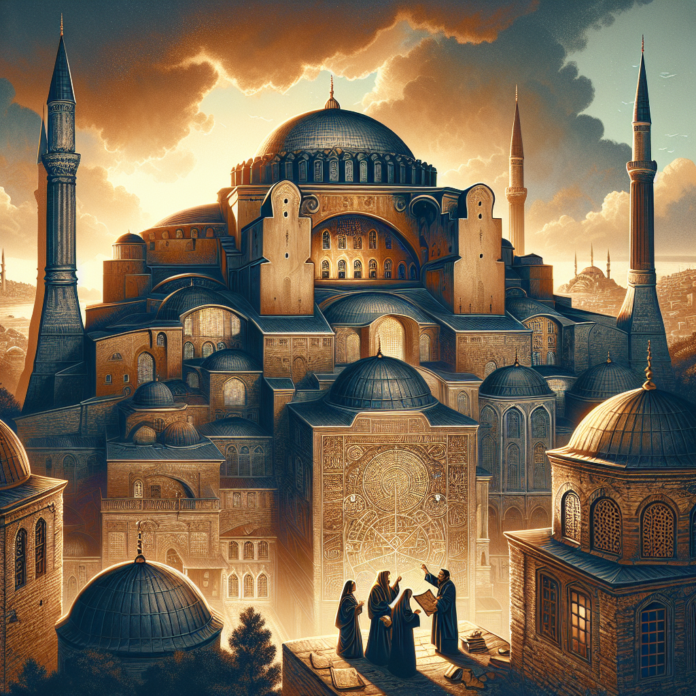[ad_1]
Hagia Sophia, one of Istanbul’s most iconic landmarks, has a rich history that spans over 1,500 years. Originally built as a cathedral in 537 AD by the Byzantine Emperor Justinian I, it served as the center of Eastern Orthodox Christianity for nearly a thousand years. In 1453, after the Ottoman conquest of Constantinople, it was converted into a mosque and remained so until 1935 when it was transformed into a museum.
Today, Hagia Sophia stands as a testament to the city’s diverse heritage and remains a popular tourist attraction, drawing millions of visitors each year. But beyond its stunning architecture and breathtaking beauty, Hagia Sophia holds a number of ancient secrets waiting to be uncovered.
The Dome of Hagia Sophia
One of the most fascinating aspects of Hagia Sophia is its massive dome, which has inspired awe and wonder for centuries. The dome, which measures over 100 feet in diameter, was a remarkable engineering feat for its time and remains one of the largest in the world. The use of pendentives to support the dome’s weight was a groundbreaking innovation that allowed for the construction of such a large and intricate structure.
Another intriguing feature of the dome is the presence of mysterious graffiti etched into its surface. These inscriptions, believed to date back to the 9th century, have puzzled historians and researchers for years. Some believe they were left by workers during the construction of the dome, while others suggest they may have been added later as a form of decoration or religious symbolism.
The Hidden Mosaics of Hagia Sophia
While many of the mosaics that once adorned the walls and ceilings of Hagia Sophia have been lost to time and conflict, some still remain hidden beneath layers of plaster and paint. In recent years, efforts have been made to uncover and restore these ancient works of art, shedding new light on the history and culture of the Byzantine Empire.
One of the most renowned mosaics found within Hagia Sophia is the Deesis panel, which depicts Christ flanked by the Virgin Mary and John the Baptist. This masterpiece of Byzantine art is considered one of the finest examples of its kind and serves as a reminder of the building’s original purpose as a place of worship.
The Secrets of Hagia Sophia’s Crypts
Beneath the main structure of Hagia Sophia lie a series of crypts and underground chambers that have long been shrouded in mystery. These hidden spaces are believed to have served a variety of purposes over the centuries, from storage to religious rites, and may contain valuable artifacts and treasures waiting to be discovered.
In recent years, archaeological excavations have uncovered several crypts beneath Hagia Sophia, including a burial chamber that is thought to have once housed the remains of prominent Byzantine figures. These findings have provided new insights into the daily life and customs of the people who once inhabited this historic site.
FAQs
Q: Is Hagia Sophia still a museum?
A: No, Hagia Sophia was converted into a mosque in 2020 by a decree from the Turkish government.
Q: Can visitors still explore the hidden areas of Hagia Sophia?
A: Some areas of Hagia Sophia, such as the crypts and underground chambers, are not open to the public due to preservation efforts and ongoing archaeological work.
Q: Are there guided tours available at Hagia Sophia?
A: Yes, visitors can book guided tours of Hagia Sophia to learn more about its history and significance from knowledgeable experts.
Q: How long does it take to explore Hagia Sophia?
A: Most visitors spend around 1-2 hours exploring the main areas of Hagia Sophia, but the sheer size and complexity of the building can warrant more time for a thorough exploration.
Q: Are there any special events or exhibits held at Hagia Sophia?
A: Hagia Sophia occasionally hosts special events, exhibits, and performances that showcase its cultural heritage and historical significance. Check the official website for upcoming events.
[ad_2]


